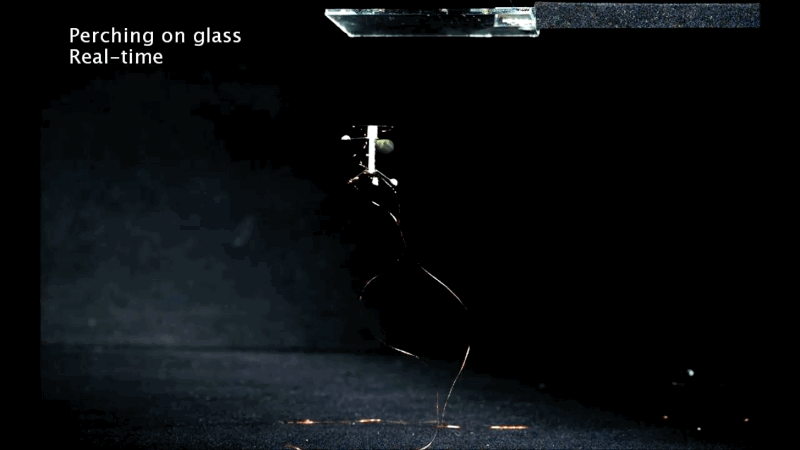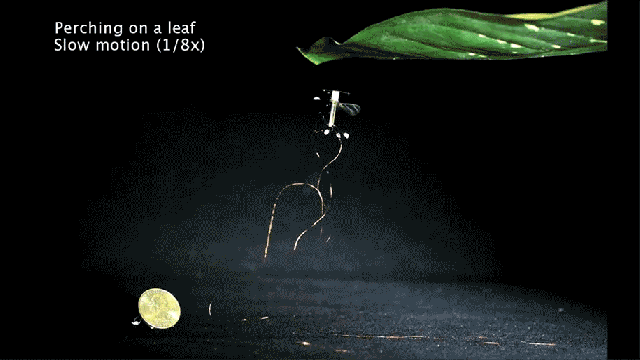Birds, bats and insects can’t fly forever, and neither can microrobotic drones. A new system that taps into the power of static electricity — the same principle that allows a balloon to stick to a wall — now allows robotic insects to land and stick to surfaces, greatly extending their operational life.
Credit: Harvard Microrobotics Lab/Harvard SEAS
Aerial microdrones are still in the developmental stage, but they will eventually be used to serve many valuable purposes, such as surveilling a site after a natural disaster, detecting hazardous chemicals or scoping out rooms for police and military forces. Flying, however, is an energy hog. Any future robotic system will have to to find a way to perch from time to time in order to extend the life of a mission.
A collaborative research team from Harvard’s Microrobotics Lab and Harvard SEAS has come up with one solution. In a Science study published today, Moritz Graule and his colleagues describe a bio-inspired robot that perches using electrostatic forces. This perching robotic insect is the smallest flying robot platform that can autonomously attach to surfaces.
The microdrone, which resembles a bee, is equipped with an electrostatic landing patch that evenly distributes a static electric charge. The robot takes off and flies normally, but when the electrode patch is switched on, it can stick to almost any surface, including glass, wood and even a leaf. A foam mount helps it to absorb the shock on landing and prevent bounces.

Credit: Harvard Microrobotics Lab/Harvard SEAS
To detach, the power supply is turned off. The patch requires only a thousandth of the power required for flight, which dramatically extends operational life. And the robotic insect — including its patch — weighs a mere 100mg, similar to the weight of a real bee (the microrobot itself weighs 84 mg).
Static electricity was the chosen perching method because of the robot’s small size. Other methods, like talons or sticky adhesives, weren’t feasible for an object the size of a paperclip.
The researchers also used motion-tracking cameras to help the robot align with its target. Because the electrostatic landing patch is located on the top of the robo-bee, it can only perch under overhangs and on ceilings. Looking ahead, the researchers would like to change the mechanical design so it can land on a surface with any orientation.
[Science]
